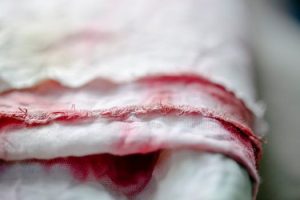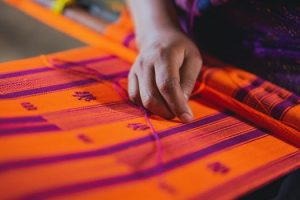Cultural Design Algorithms Preserve Traditional Fashion Techniques
The fashion industry is constantly evolving, with new trends and styles emerging every season. However, amidst this ever-changing landscape, there lies a rich cultural heritage of traditional fashion techniques that have withstood the test of time. These techniques, passed down through generations, not only hold a deep significance in their respective cultures but also possess a unique charm that cannot be replicated. In recent years, there has been a growing concern about preserving these traditional fashion techniques in the face of modernization and globalization. This is where cultural design algorithms come in as a powerful tool to safeguard and revitalize these unique practices. In this article, we will dive into the world of cultural design algorithms and how they help preserve traditional fashion techniques.
What are Cultural Design Algorithms?
Cultural design algorithms are methods used to integrate traditional fashion techniques into modern designs. These algorithms take into account the cultural, historical, and social significance of traditional techniques and incorporate them into contemporary fashion. This not only helps in preserving these techniques but also gives them a new lease of life by making them relevant in the current fashion landscape.
The Need for Preserving Traditional Fashion Techniques
The importance of preserving traditional fashion techniques cannot be emphasized enough. These techniques are not merely the skills of weaving, embroidery, or dyeing, but are intertwined with the culture, identity, and values of a community. They represent the history, stories, and beliefs of a particular region or ethnicity.
With the rise of fast fashion, there has been a decline in the use of traditional techniques as they are time-consuming and require a higher level of skill. Additionally, the demand for mass-produced, inexpensive clothing has led to the use of synthetic fibers and harsh chemicals, which have a detrimental impact on the environment and the artisans practicing these traditional techniques.
As a result, there is a risk of losing these valuable skills and the cultural heritage associated with them. However, with the advancement of technology and the use of cultural design algorithms, there is hope for revitalizing and preserving these traditional techniques.
How Cultural Design Algorithms Preserve Traditional Fashion Techniques
Cultural design algorithms use a combination of data, technology, and cultural knowledge to create designs that reflect the traditional techniques of a particular culture. These algorithms analyze data such as color, patterns, and motifs used in traditional garments and incorporate them into modern designs. They also take into account the historical and cultural significance of these techniques, ensuring that the essence and authenticity of the traditional practices are not lost in the process.
One of the most significant advantages of using cultural design algorithms is the ability to make these techniques more accessible and feasible in today’s fast-paced fashion industry. By digitizing these techniques, designers can create patterns and designs that can be easily replicated, reducing the time and effort required to produce traditional garments. This not only makes it easier for designers to incorporate these techniques into their collections, but it also opens up opportunities for artisans to market their work on a larger scale.
Revitalizing Traditional Fashion Techniques
Cultural design algorithms have not only helped in preserving traditional fashion techniques but have also sparked a resurgence of interest in these practices. By merging the old with the new, designers have created unique and modern designs that pay homage to the cultural heritage and traditions of various communities. This has led to a growing demand for traditional garments and textiles, not just in their places of origin, but globally as well.
The use of cultural design algorithms has also enabled designers to experiment and innovate, creating a fusion of traditional and modern designs that appeal to a wider audience. This has opened up opportunities for cross-cultural collaborations and has provided a platform for artisans to showcase their skills and craftsmanship.
Conclusion
Cultural design algorithms are a powerful tool in preserving and revitalizing traditional fashion techniques. They not only help in making these techniques relevant in today’s world but also create new opportunities for the artisans practicing these skills. As we move towards a more sustainable and inclusive fashion industry, it is crucial to recognize and celebrate the cultural significance of traditional fashion techniques and embrace them in our modern designs.
Let us appreciate and support the preservation of traditional fashion techniques through the use of cultural design algorithms, and in doing so, help keep these invaluable cultural practices alive for generations to come.











